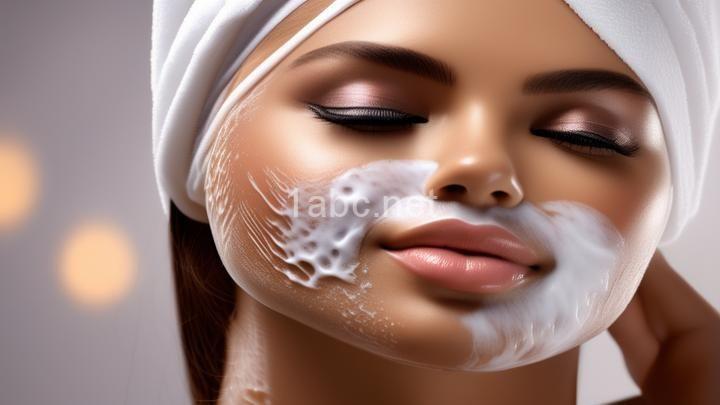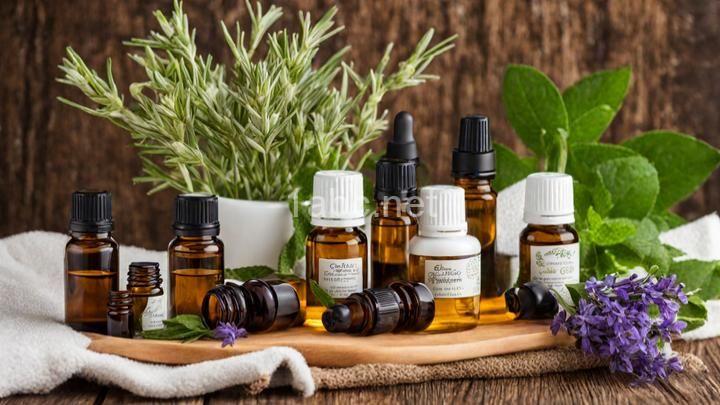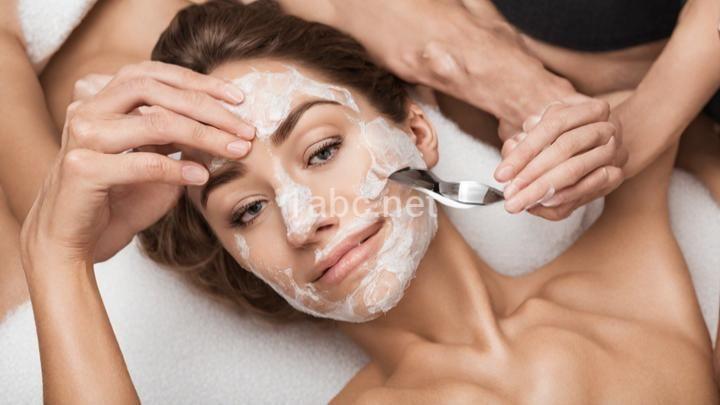The Do's and Don'ts of Exfoliation: Mistakes to Avoid for Healthy Skin

Introduction
Hey there, skin enthusiasts! We all know how important it is to take care of our skin, and one crucial step in achieving that healthy, radiant glow is exfoliation. But wait, before you dive headfirst into the world of exfoliation, let's talk about the do's and don'ts to ensure you're getting the most out of this skincare step without any mishaps. So grab your favorite beverage, sit back, and let's dive into the wonderful world of exfoliation!
I. The Do's of Exfoliation
A. Choose the Right Exfoliator
When it comes to exfoliation, one size definitely does not fit all. There are three main types of exfoliators: physical, chemical, and enzymatic. Physical exfoliators, like scrubs or brushes, use friction to remove dead skin cells. Chemical exfoliators, such as alpha hydroxy acids (AHAs) and beta hydroxy acids (BHAs), work by dissolving the bonds between dead skin cells. Enzymatic exfoliators, like those containing fruit enzymes, break down dead skin cells through enzymatic reactions.
To choose the right exfoliator for your skin, consider your skin type. If you have sensitive or acne-prone skin, a chemical or enzymatic exfoliator may be gentler and more effective for you. On the other hand, if you have tougher skin, a physical exfoliator with gentle beads or brushes could be a great option. Experiment and find what works best for you!
B. Follow a Regular Exfoliation Routine
Consistency is key when it comes to exfoliation. Incorporating exfoliation into your skincare routine on a regular basis can yield the best results. However, it's important not to overdo it. Over-exfoliating can lead to irritation, redness, and even damage to the skin's natural barrier.
The frequency of exfoliation depends on your skin type. If you have dry or sensitive skin, exfoliating once a week may be enough. For oily or acne-prone skin, exfoliating twice a week might be more beneficial. Listen to your skin and adjust your routine accordingly.
C. Be Gentle with Your Skin
Remember, your skin is delicate, so treat it with care when exfoliating. Applying excessive pressure or using harsh movements can lead to irritation and even micro-tears in the skin. Instead, opt for gentle circular motions and use light pressure when exfoliating. Let the exfoliator do the work for you.
II. The Don'ts of Exfoliation
A. Don't Over-Exfoliate
While exfoliation is fantastic for removing dead skin cells and revealing a fresh, glowing complexion, too much of a good thing can be harmful. Over-exfoliating can disrupt the skin's natural barrier, leading to dryness, redness, and increased sensitivity.
Pay attention to your skin's signals. If you notice any signs of over-exfoliation, such as excessive dryness, redness, or increased breakouts, it's time to dial back on the exfoliation. Remember, moderation is key!
B. Avoid Harsh or Abrasive Scrubs
We've all seen those physical scrubs with large, jagged particles that promise to slough away dead skin. However, these scrubs can actually do more harm than good. The rough particles can cause micro-tears in the skin, leading to inflammation and irritation.
Instead, opt for gentler options like chemical or enzymatic exfoliants. These products work on a deeper level without the risk of physical damage. Look for ingredients like AHAs, BHAs, or fruit enzymes, which can effectively remove dead skin cells without the harsh scrubbing.
C. Stay Away from Sensitive Areas
When it comes to exfoliation, some areas of your face require extra care. Delicate areas like around the eyes and lips should be treated with caution. The skin in these areas is thinner and more sensitive, making it prone to irritation.
To take care of these sensitive areas, avoid exfoliating directly on them. Instead, focus on the rest of your face and use a gentle cleanser or moisturizer around the eyes and lips. If you need extra exfoliation in these areas, consider using milder exfoliating products specifically formulated for sensitive skin.
III. Additional Tips for Effective Exfoliation
A. Moisturize After Exfoliating
Exfoliation helps to remove dead skin cells, but it's equally important to replenish and nourish your skin afterward. After exfoliating, make sure to moisturize your skin to lock in hydration. Look for a moisturizer that suits your skin type and contains ingredients like hyaluronic acid or ceramides to keep your skin plump and hydrated.
B. Protect Your Skin from Sun Exposure
Did you know that exfoliated skin is more susceptible to sun damage? That's right! Exfoliation removes the top layer of dead skin cells, making your skin more vulnerable to harmful UV rays. To protect your newly revealed skin, always apply sunscreen with at least SPF 30 after exfoliating. This will shield your skin from the sun's harmful rays and prevent premature aging.
C. Listen to Your Skin
Everyone's skin is unique, so it's important to pay attention to how your skin reacts to exfoliation. If you notice any adverse reactions like redness, irritation, or excessive dryness, adjust your exfoliation routine accordingly. Your skin's needs may change over time, so be open to modifying your routine as necessary.
Conclusion
Congratulations, you've reached the end of our exfoliation journey! We've covered the do's and don'ts of exfoliation to help you achieve healthy, glowing skin. Remember to choose the right exfoliator for your skin type, follow a regular exfoliation routine, and be gentle with your skin. Avoid over-exfoliation, harsh scrubs, and sensitive areas. Moisturize and protect your skin from the sun, and always listen to what your skin is telling you.
Now, armed with this knowledge, go forth and exfoliate with confidence. Your skin will thank you for it!
FREQUENTLY ASKED QUESTIONS
What is exfoliation and why is it important for healthy skin?
Exfoliation is the process of removing dead skin cells from the surface of the skin. It plays a vital role in maintaining healthy and glowing skin. Dead skin cells can accumulate on the skin's surface, leading to a dull complexion, clogged pores, and an uneven texture. By exfoliating regularly, you can effectively slough off these dead cells, revealing fresher, smoother skin underneath.There are two main types of exfoliation: physical exfoliation and chemical exfoliation. Physical exfoliation involves using a scrub or brush to manually remove dead skin cells. On the other hand, chemical exfoliation involves the use of acids or enzymes to dissolve the bonds between dead skin cells, allowing them to be easily shed.
Exfoliation offers several benefits for the skin. Firstly, it helps to unclog pores, preventing the formation of blackheads and whiteheads. It also improves the absorption of skincare products, allowing them to penetrate deeper into the skin and work more effectively. Additionally, exfoliating can stimulate collagen production, leading to firmer and more youthful-looking skin. Furthermore, regular exfoliation can promote a more even skin tone, reducing the appearance of dark spots and hyperpigmentation.
However, it is important to note that exfoliation should be done with caution and moderation. Over-exfoliating can cause irritation, redness, and sensitivity. It is recommended to exfoliate 1-3 times a week, depending on your skin type and sensitivity. It is also important to choose the right exfoliant for your skin, considering factors such as texture, ingredients, and sensitivity.
In conclusion, exfoliation is a crucial step in any skincare routine. By removing dead skin cells, it helps to reveal a healthier and more radiant complexion. Just remember to exfoliate gently and choose the right exfoliant for your skin type.
How often should I exfoliate my skin?
When it comes to exfoliating your skin, it's important to strike the right balance. Exfoliation helps remove dead skin cells, unclog pores, and promote a healthy, radiant complexion. However, over-exfoliating can cause irritation and damage to your skin. In general, most dermatologists recommend exfoliating your skin 1-2 times a week. This frequency allows for the removal of dead skin cells without stripping away the natural oils and protective barrier of your skin.
However, it's important to listen to your skin's needs and adjust accordingly. If you have sensitive or dry skin, you may need to exfoliate less frequently, perhaps once every 10-14 days. On the other hand, if you have oily or acne-prone skin, you may benefit from exfoliating more often, up to 3 times a week.
Remember to choose a gentle exfoliating product that suits your skin type. Look for ingredients like alpha-hydroxy acids (AHAs) or beta-hydroxy acids (BHAs), which can effectively remove dead skin cells without causing irritation. And always follow up with a moisturizer to keep your skin hydrated and protected.
By finding the right balance and listening to your skin, you can enjoy the benefits of exfoliation while maintaining a healthy and radiant complexion.
Can I exfoliate if I have sensitive skin?
Yes, you can exfoliate even if you have sensitive skin, but it's important to do so with caution. Exfoliating can help remove dead skin cells and improve the texture of your skin, but it needs to be done gently to avoid irritation.First, choose a gentle exfoliator specifically designed for sensitive skin. Look for products that contain mild exfoliating agents like fruit enzymes or gentle acids such as lactic acid or salicylic acid. Avoid harsh scrubbing particles or abrasive ingredients that can cause redness and inflammation.
Next, test the product on a small patch of skin before applying it to your entire face. This will help you determine if your skin reacts negatively to the exfoliator. If you experience any irritation or discomfort, discontinue use immediately.
When exfoliating, use a light touch and apply gentle circular motions. Avoid scrubbing too vigorously or for too long, as this can damage the delicate skin barrier. Limit exfoliation to once or twice a week, depending on how your skin reacts.
After exfoliating, be sure to moisturize your skin to replenish hydration. Look for a moisturizer that is suitable for sensitive skin and free of fragrances and harsh chemicals. This will help soothe and protect your skin after exfoliation.
Remember, everyone's skin is unique, so it's important to listen to your skin's needs and adjust your exfoliation routine accordingly. If you have severe sensitivity or a skin condition, it's always best to consult with a dermatologist before incorporating exfoliation into your skincare routine.
What are the different types of exfoliation methods?
Exfoliation is an essential step in any skincare routine as it helps to remove dead skin cells and reveal a smoother, more radiant complexion. There are various methods of exfoliation, each with its own benefits. Let's explore some of the different types:
-
Physical exfoliation: This method involves physically scrubbing the skin using granular substances, such as sugar, salt, or crushed fruit pits. These particles help to slough off dead skin cells and unclog pores. Physical exfoliation can be done through facial scrubs, brushes, or exfoliating gloves. It is important to be gentle when using physical exfoliation to avoid irritating the skin.
-
Chemical exfoliation: Instead of using physical abrasion, chemical exfoliation utilizes acids or enzymes to dissolve dead skin cells. Alpha hydroxy acids (AHAs), such as glycolic acid and lactic acid, and beta hydroxy acids (BHAs), like salicylic acid, are commonly used in chemical exfoliants. These acids work by breaking down the bonds between skin cells, promoting their shedding. Chemical exfoliation is available in the form of toners, serums, and peels.
-
Enzyme exfoliation: Enzymes derived from fruits, such as papaya and pineapple, are used in enzyme exfoliants. These enzymes gently dissolve dead skin cells, leaving the skin smooth and refreshed. Enzyme exfoliation is a milder option compared to physical or chemical exfoliation, making it suitable for sensitive skin types.
-
Microdermabrasion: This method involves using a handheld device that emits fine crystals to exfoliate the skin. The crystals are then vacuumed away, along with the dead skin cells, revealing a fresh complexion. Microdermabrasion is usually performed in a professional setting but can also be done at home with specialized kits.
-
Dermaplaning: Dermaplaning is a method that uses a sterile surgical scalpel to gently scrape off the top layer of dead skin cells and fine facial hair. This process not only exfoliates but also helps to create a smoother canvas for makeup application.
It's important to note that not all exfoliation methods are suitable for everyone. Individuals with sensitive or acne-prone skin should opt for gentler options, while those with more resilient skin may benefit from stronger exfoliants. Additionally, it is crucial to follow proper skincare practices and to not over-exfoliate, as this can lead to irritation and damage the skin's barrier.
Remember, finding the right exfoliation method for your skin type and concerns may require some trial and error. It's always a good idea to consult with a skincare professional for personalized advice and recommendations.


